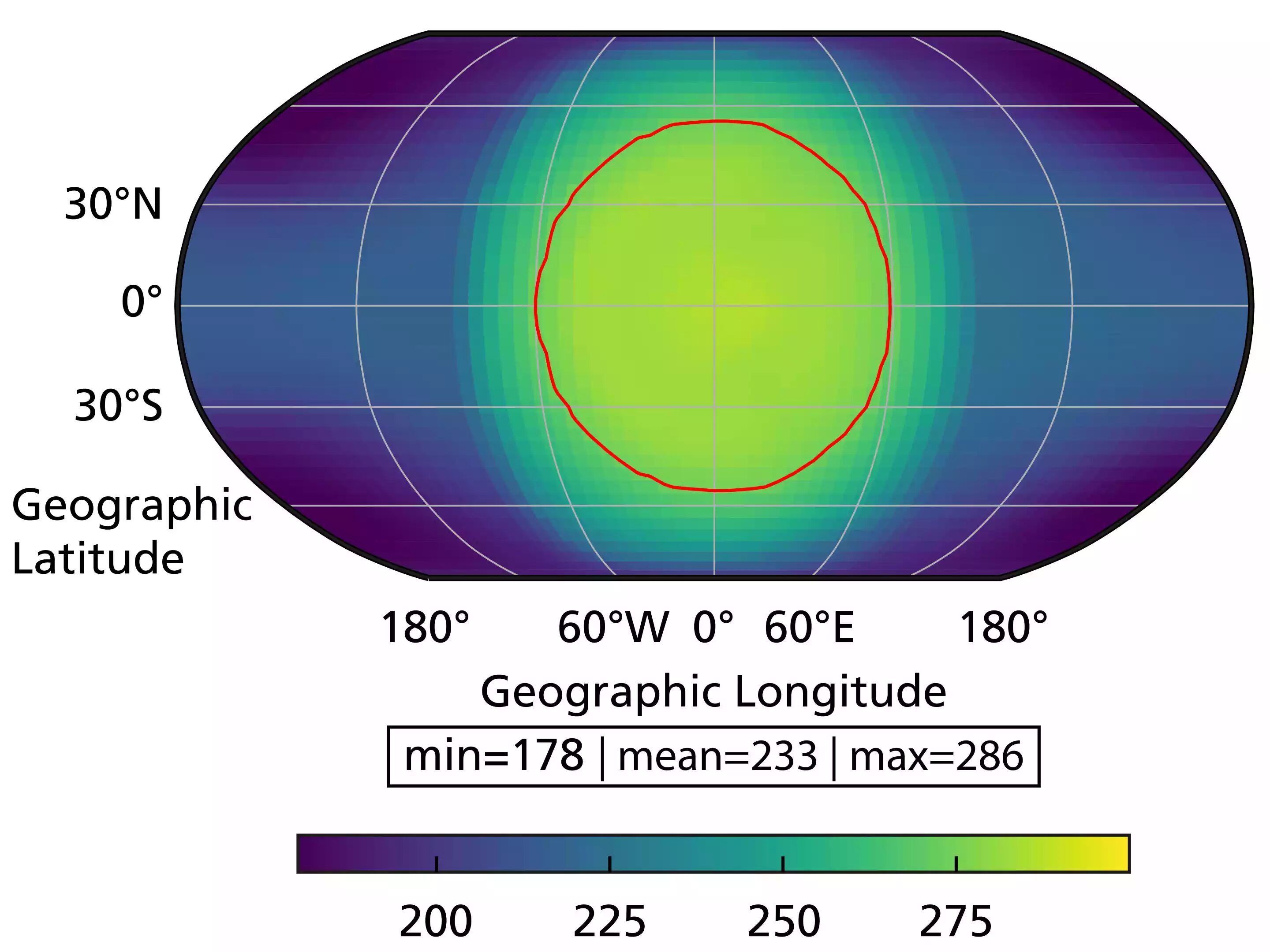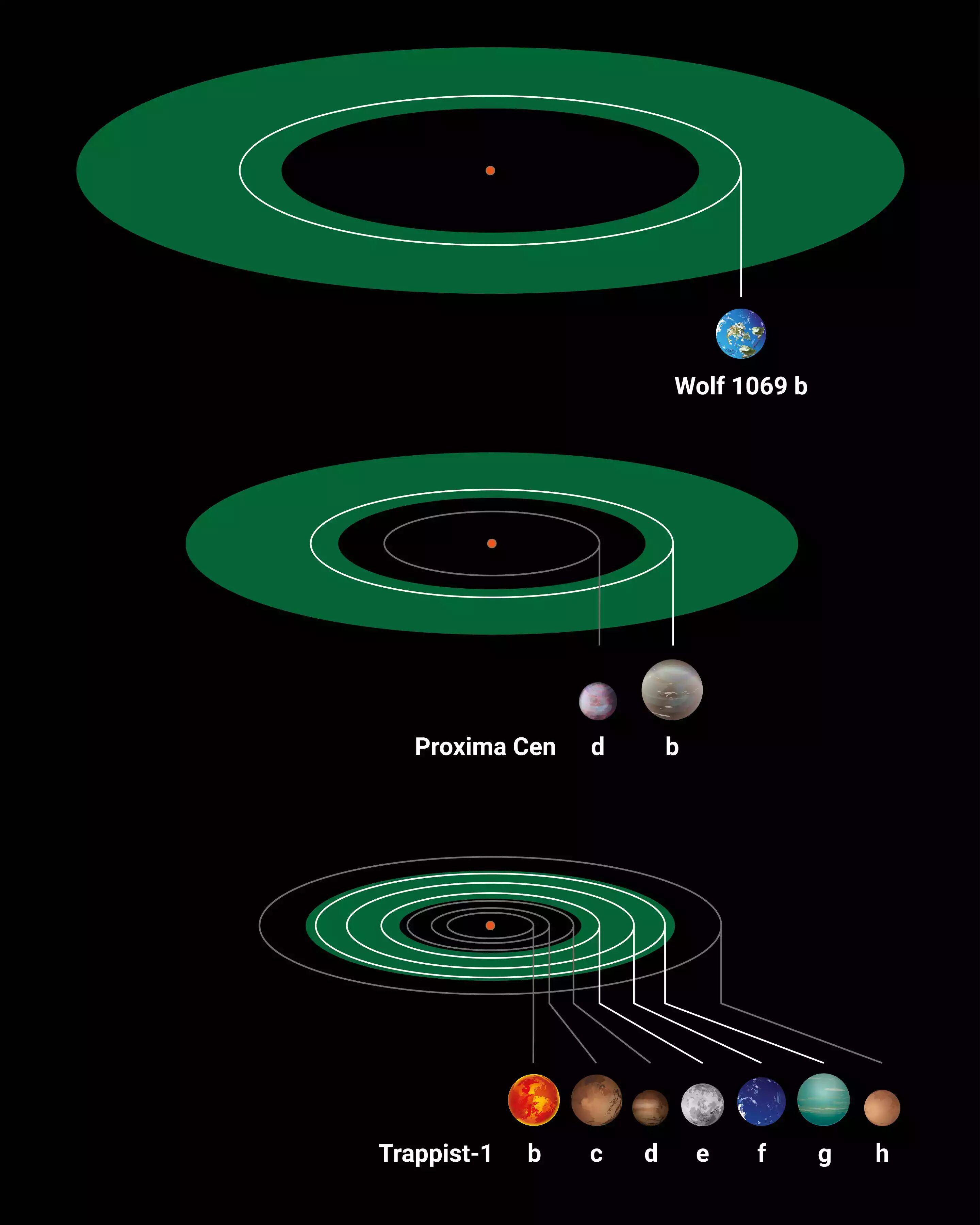
This zone includes distances around the star for which liquid water can exist on the surface of the planet. In addition, the planet named Wolf 1069 b has an Earth-like mass. Very likely, this planet is a rocky planet that may also have an atmosphere. This makes the planet one of the few promising targets to search for signs of life-friendly conditions and biosignatures.
When astronomers search for planets outside our solar system, they are particularly interested in Earth-like planets. Of the more than 5,000 exoplanets they have discovered so far, only about a dozen have an Earth-like mass and populate the habitable zone, the range in a planetary system where water can maintain its liquid form on the planet's surface. With Wolf 1069 b, the number of such exoplanets on which life could have evolved has increased by one candidate.
A planet with eternal day and night
Detecting such low-mass planets is still a major challenge. Diana Kossakowski and her team at the Max Planck Institute for Astronomy in Heidelberg have taken on this task. As part of the Carmenes project, an instrument was developed specifically for the search of potentially habitable worlds. The Carmenes team is using this apparatus at the Calar Alto Observatory in Spain.
"When we analyzed the data of the star Wolf 1069, we discovered a clear, low-amplitude signal of what appears to be a planet of roughly Earth mass," says Diana Kossakowski. "It orbits the star within 15.6 days at a distance equivalent to one-fifteenth of the separation between the Earth and the sun," The results of the study have now been published in the journal Astronomy & Astrophysics.

In addition, they may all share a special property. Their rotation is probably tidally locked to the orbit of its host star. In other words, the star always faces the same side of the planet. So there is eternal day, while on the other side it is always night. This is also the reason why we always face the same side of the moon.
Climate simulations for exoplanets
If Wolf 1069 b is assumed to be a bare and rocky planet, the average temperature even on the side facing the star would be just minus 23 degrees Celsius. However, according to existing knowledge, it is quite possible that Wolf 1069 b has formed an atmosphere. Under this assumption its temperature could have increased to plus 13 degrees, as computer simulations with climate models show. Under these circumstances, water would remain liquid and life-friendly conditions could prevail, because life as we know it depends on water.
An atmosphere is not only a precondition for the emergence of life from a climatic point of view. It would also protect Wolf 1069 b from high-energy electromagnetic radiation and particles that would destroy possible biomolecules. The radiation and particles either stem from interstellar space or from the central star. If the star's radiation is too intense, it can also strip off a planet's atmosphere, as it did for Mars. But as red dwarf, Wolf 1069 emits only relatively weak radiation.
Thus, an atmosphere may have been preserved on the newly discovered planet. It is even possible that the planet has a magnetic field that protects it from charged stellar wind particles. Many rocky planets have a liquid core, which generates a magnetic field via the dynamo effect, similar to planet Earth.

There has been immense progress in the search for exoplanets since the first of its kind was discovered 30 years ago. Still, the signatures that astronomers look for to detect planets with Earth-like masses and diameters are relatively weak and hard to extract from the data. The Carmenes team is looking for small periodic frequency shifts in the stellar spectra. These shifts are expected to arise when a companion pulls on the host star by its gravity, causing it to wobble. As a result. the frequency of the light measured on Earth changes due to the Doppler effect.
In the case of Wolf 1069 and its newly discovered planet, these fluctuations are large enough to be measured. One of the reasons is that the mass difference between the star and planet is relatively small, causing the star to wobble around the shared center of mass more prominently than in other cases. From the periodic signal, the mass of the planet can be estimated, as well.
Only a handful of candidates for future exoplanet characterization
At a distance of 31 light-years, Wolf 1069 b is the sixth closest Earth-mass planet in the habitable zone around its host star. It belongs to a small group of objects, such as Proxima Centauri b and Trappist-1 e, that are candidates for biosignature searches. However, such observations are currently beyond the capabilities of astronomical research.
"We will probably have to wait another ten years for this," Kossakowski points out. The Extremely Large Telescope (ELT), currently under construction in Chile, may be able to study the composition of the atmospheres of those planets and possibly even detect molecular evidence of life.



Reader Comments
Unless someone invents warp drives..... it will never happen.
All the planetary hopium destroyed at the end by un godly distance away..
Pravdaseeker
Tee hee hee